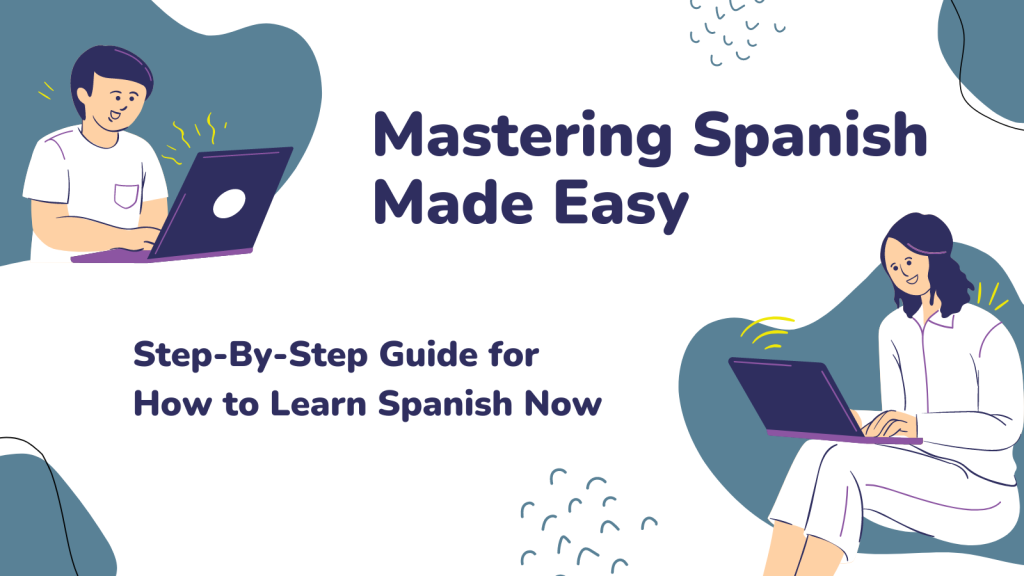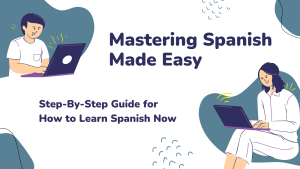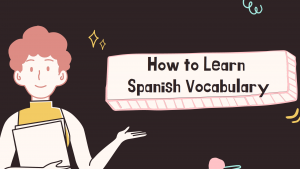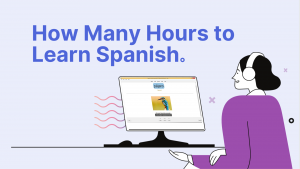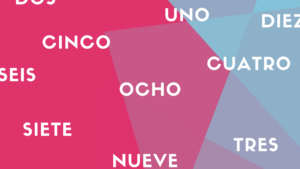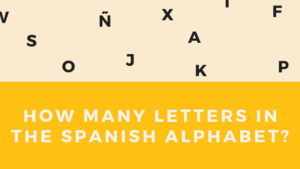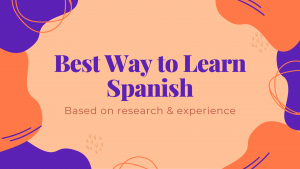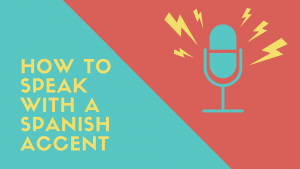Mastering Spanish Made Easy: Step-By-Step Guide for How to Learn Spanish Now
In this comprehensive guide, “Mastering Spanish Made Easy: Step-By-Step Guide for How to Learn Spanish,” we will explore the path to fluency in three main sections. Learning Spanish can be an exciting and rewarding journey, opening doors to a rich culture, new friendships, and a broader perspective. Whether you’re starting from scratch or looking to take your Spanish skills to the next level, having a clear roadmap and effective strategies can make all the difference.
First, we will define what it means to be fluent in Spanish and set realistic goals. Then, we will delve into three key concepts that form the foundation of successful language acquisition. Finally, we will present a practical four-step approach that will guide you through the learning process, empowering you to make significant progress in your Spanish language skills.
So, whether you’re dreaming of strolling through the charming streets of Barcelona or engaging in lively conversations with native speakers, let’s embark on this exciting language learning journey together.
DEFINING FLUENCY
Fluency is a term that can spark debates among language learners. For some, it revolves around the speed, flow, and lack of hesitation when speaking Spanish. Others view fluency as a broader concept that encompasses proficiency in all major language skills—speaking, reading, writing, and listening. The ambiguity surrounding fluency can make it confusing to develop an effective strategy for learning Spanish.
Enter the B2 Level
To bring clarity to the language learning journey, let’s focus on reaching the B2 level in Spanish. The B2 level corresponds to the B2 high-intermediate level in the Common European Framework of Reference for Languages (CEFR). This framework, widely adopted worldwide, provides a standardized grading system for language learners. The levels range from A1 and A2 (beginner) to B1 and B2 (lower and higher intermediate), and finally to C1 and C2 (advanced and superior).
Why B2 Matters
The B2 level holds particular significance for aspiring Spanish learners who want to know how to learn Spanish. Many experienced language learners consider it the tipping point for fluency. At this level, you can engage in comfortable conversations and interactions with native Spanish speakers. Additionally, you can comprehend various Spanish texts and media. B2 marks a stage where you can effortlessly progress in the language through continuous exposure and immersion, focusing less on grammar and vocabulary drills.
Unlocking the Power of B2
Reaching the B2 level opens up a world of exponential growth in your Spanish language skills. It provides a solid foundation to enhance your proficiency organically, enjoying engaging input and interactions. Immersing yourself in the language becomes more enjoyable, allowing you to make significant strides without constant focus on grammar rules or vocabulary memorization.
The Significance of “Fluency”
Unlike the descriptors for the A1, A2, and B1 levels in the CEFR, the word “fluency” appears explicitly from the B2 level onward. Hence, aiming for the B2 level is a strategic approach to learning Spanish. It not only provides a clear benchmark but also aligns with the commonly accepted notion of fluency.
Why Being Clear About “Fluency” is Important
Understanding the path to fluency in Spanish requires clarity and direction. By setting your sights on the B2 level, you embark on a journey where you can comfortably communicate with native speakers and comprehend various Spanish materials. Reaching B2 not only signifies fluency but also grants you the freedom to grow and explore the language naturally. So, let’s embrace the challenge and aspire to become fluent Spanish speakers at the B2 level and beyond.
3 Key Concepts on How to Learn Spanish
Before delving into the four-step method for mastering Spanish, it’s essential to understand three main concepts that form the foundation of this effective language learning strategy. These principles revolve around the use of spaced repetition, the benefits of comprehensible input, and the importance of deliberate practice. By incorporating these concepts into your language learning journey, you can optimize your progress and accelerate your path to fluency in Spanish.
1. The Use of Spaced Repetition
Learning a new language like Spanish involves mastering various elements, such as vocabulary, grammar, pronunciation, and more. However, our brains have limitations when it comes to retaining large amounts of information both in a short term and long term. This is where spaced repetition comes in.
Based on Ebbinghaus’ research on the forgetting curve, spaced repetition is a technique that combats the natural decay of learned information over time. It involves reviewing and testing yourself on specific information at gradually spaced intervals. As you demonstrate your ability to remember the information, the intervals between reviews grow larger, allowing it to be stored in your long-term memory.
Anki, a spaced repetition software program, proves invaluable in managing the language elements you want to learn. It presents the information you need to remember at the optimal time, right before you’re likely to forget it. By utilizing Anki’s features, such as flashcards and review tests, you can extend the lifespan of your memory for Spanish vocabulary and grammar, enhancing your overall learning experience.
2. Comprehensible and Compelling Input
The second principle focuses on the importance of immersing yourself in comprehensible and compelling input. This means exposing yourself to Spanish language materials that are both interesting and relevant to your life. Comprehensibility plays a vital role in this process.
To maximize language growth, it’s crucial to engage with materials that are slightly above your current level. This allows for incremental expansion of your Spanish language skills. Linguist Stephen Krashen popularized the concept of comprehensible and compelling input, highlighting its positive impact on second language acquisition.
Finding compelling input can be challenging, especially at the beginning stages of learning Spanish. Deliberate practice and form-focused learning come into play here. While gradually immersing yourself in native Spanish materials, you can supplement your learning with targeted practice using flashcards, exercises, textbooks, and other resources. This approach ensures a balanced learning program that facilitates understanding of basic structures, vocabulary, grammar, and pronunciation.
As your confidence in core vocabulary and grammar increases, the emphasis shifts from deliberate practice to extensive exposure to comprehensible input. This shift allows for a more immersive experience, enabling you to further enhance your Spanish language acquisition.
3. The Use of Deliberate Practice
Deliberate practice, as advocated by linguist Paul Nation, complements the concept of comprehensible and compelling input. At the beginning stages of learning Spanish, when comprehensible input is limited, deliberate practice plays a crucial role in establishing a solid foundation.
Engaging in deliberate practice involves focused study through activities like using Anki flashcards, working with textbooks, and practicing pronunciation drills. These targeted exercises help develop a strong understanding of basic structures, vocabulary, and grammar. Anki’s spaced repetition benefits further enhance the effectiveness of deliberate practice by reinforcing your memory of the learned information.
Once you’ve gained confidence in the fundamentals, deliberate practice can be reduced while increasing the amount of comprehensible input. Emphasizing immersion in native Spanish materials allows for a more natural language acquisition process, reinforcing your skills and expanding your fluency.
The Importance of the 3 Key Concepts
By grasping the concepts of spaced repetition, comprehensible input, and deliberate practice, you lay a solid foundation for your Spanish language learning journey.
Utilize tools like Anki to maximize the benefits of spaced repetition and manage your vocabulary and grammar acquisition effectively. Seek out compelling input that is just above your current level to challenge and expand your linguistic abilities. Combine deliberate practice with form-focused learning at the beginning stages to establish a strong base. As you progress, prioritize extensive exposure to comprehensible input to enhance your language acquisition.
How to Learn Spanish at the B2 Level: A Four-Step Approach
Now, let’s explore a comprehensive four-step method to help you effectively learn Spanish, utilizing the power of spaced repetition and comprehensible input. By following these steps, you can lay a strong foundation in pronunciation, vocabulary, grammar, and personalization, leading you towards Spanish language mastery.
Step 1: Mastering Spanish Pronunciation
Begin your language journey by focusing on Spanish pronunciation. The sounds and phonemes of the Spanish language are crucial for effective communication. As an English speaker, you may encounter challenges in both understanding and producing native-like Spanish pronunciation. To overcome this hurdle, it is essential to recognize and practice the unique sounds of Spanish.
You can kickstart your pronunciation practice using Anki and spaced repetition. Start with the Spanish alphabet, as it forms the basis of the Spanish writing system, aiding your reading and writing skills.
Familiarize yourself with sounds that are similar to English and those that differ. You can do this by learning the Spanish International Phonetic Alphabet (IPA) through Anki. The IPA provides standardized representations of sounds used in various languages, enabling you to understand correct Spanish pronunciation and patterns.
For further refinement, consider using Spanish minimal pairs in Anki. Minimal pairs are flashcards that present two words with subtle sound differences. By training your ear to distinguish these nuances, you will enhance your ability to perceive and produce Spanish sounds accurately.
Step 2: Embracing Core Vocabulary
Building a strong vocabulary foundation is crucial for language fluency. However, focusing on every Spanish word may prove overwhelming. Instead, concentrate on the most frequently used words to maximize your learning efficiency.
Linguists, including Paul Nation, have conducted studies that demonstrate learning the top 2000 words in a language covers a significant portion of everyday texts and conversations. By utilizing Anki’s spaced repetition feature, you can effectively learn and retain these essential Spanish words. Begin with visual-based learning for simpler concepts, gradually progressing to abstract and grammatically complex vocabulary through sentences and definitions in Spanish.
Additionally, pay attention to common Spanish phrases used in various contexts. Greetings, basic requests, and responses will prove invaluable as you navigate Spanish-speaking environments.
Step 3: Understanding Spanish Grammar
To solidify your language skills, familiarize yourself with Spanish grammar. Utilize Anki to absorb the main grammar concepts efficiently. Focus on the most frequently used grammar points, creating flashcards for each topic. Anki’s spaced repetition system will reinforce your understanding and retention of Spanish grammar, eliminating the need for extensive handwritten exercises or conjugation drills.
Rather than attempting to learn every example, select one or two sample sentences per grammar point. Include clear descriptions of the grammar rule in your flashcards. This streamlined approach will help you establish a sturdy foundation in Spanish grammar.
Step 4: Personalizing Your Learning Experience
Once you have acquired a strong basis in pronunciation, vocabulary, and grammar, it’s time to personalize your Spanish learning journey. Increase your exposure to comprehensible input by immersing yourself in native Spanish language materials. Dedicate daily time to listening to speeches, songs, reading books, newspapers, and other relevant content.
For improved accuracy, consider engaging with a tutor or language exchange partner. Conversing and writing in Spanish while receiving corrections will enhance your language skills. Transform these corrections into Anki flashcards, reinforcing proper usage and ensuring long-term retention.
At this stage, Spanish learning becomes enjoyable as you discover relevant and compelling content that aligns with your personal interests and experiences.
THE BOTTOM LINE: HOW TO LEARN SPANISH TO FLUENCY
So how to learn Spanish effectively? To learn Spanish effectively, follow this four-step method: mastering pronunciation, building core vocabulary, understanding grammar up to the B2 level, and personalizing your learning experience.
Anki’s spaced repetition system serves as a powerful tool throughout the process, enabling efficient comprehension and retention. Embrace the concept of comprehensible input and immerse yourself in the richness of the Spanish language.
With dedication and consistent practice, you’ll progress toward your goal of mastering Spanish at the B2 fluency level.
You May Also Like
